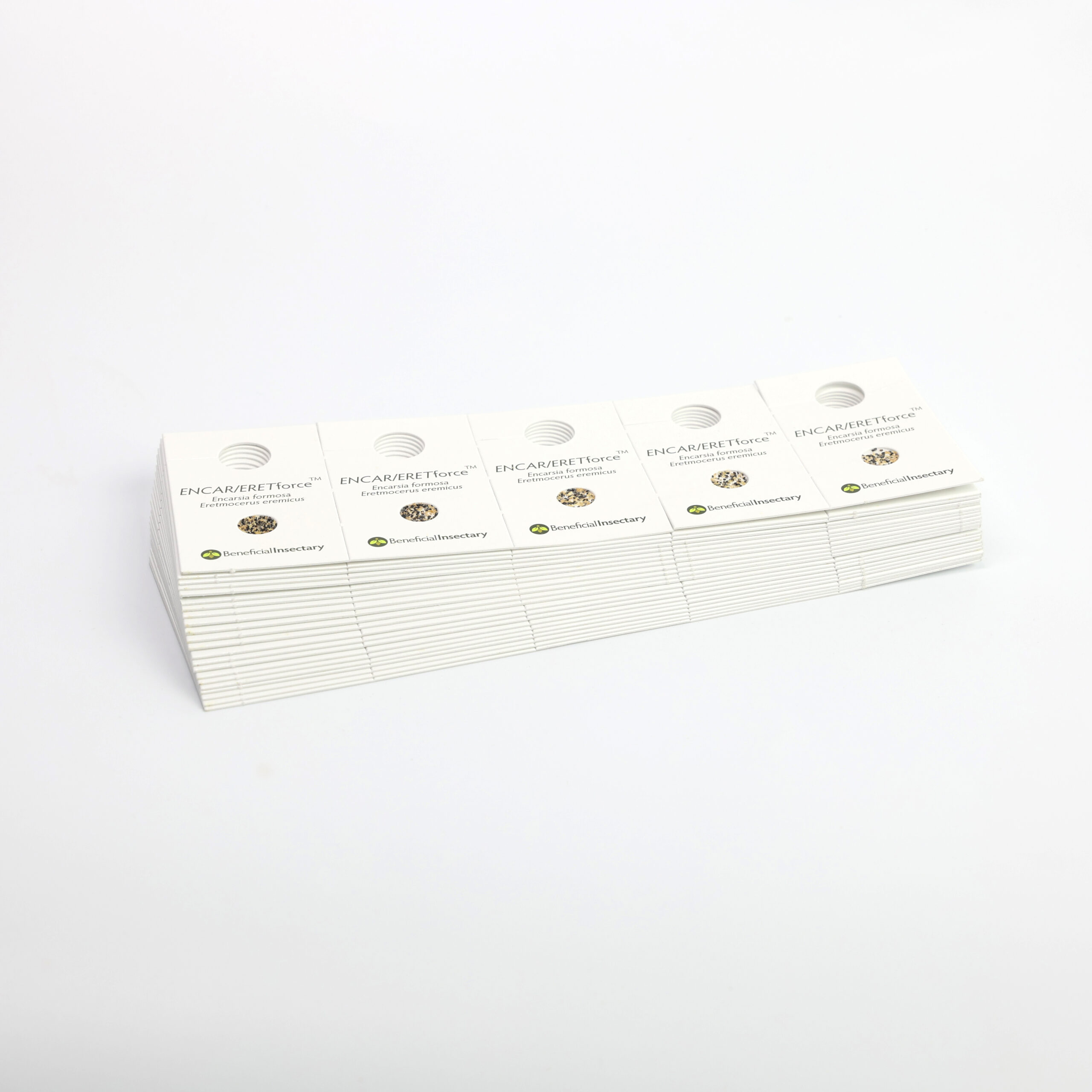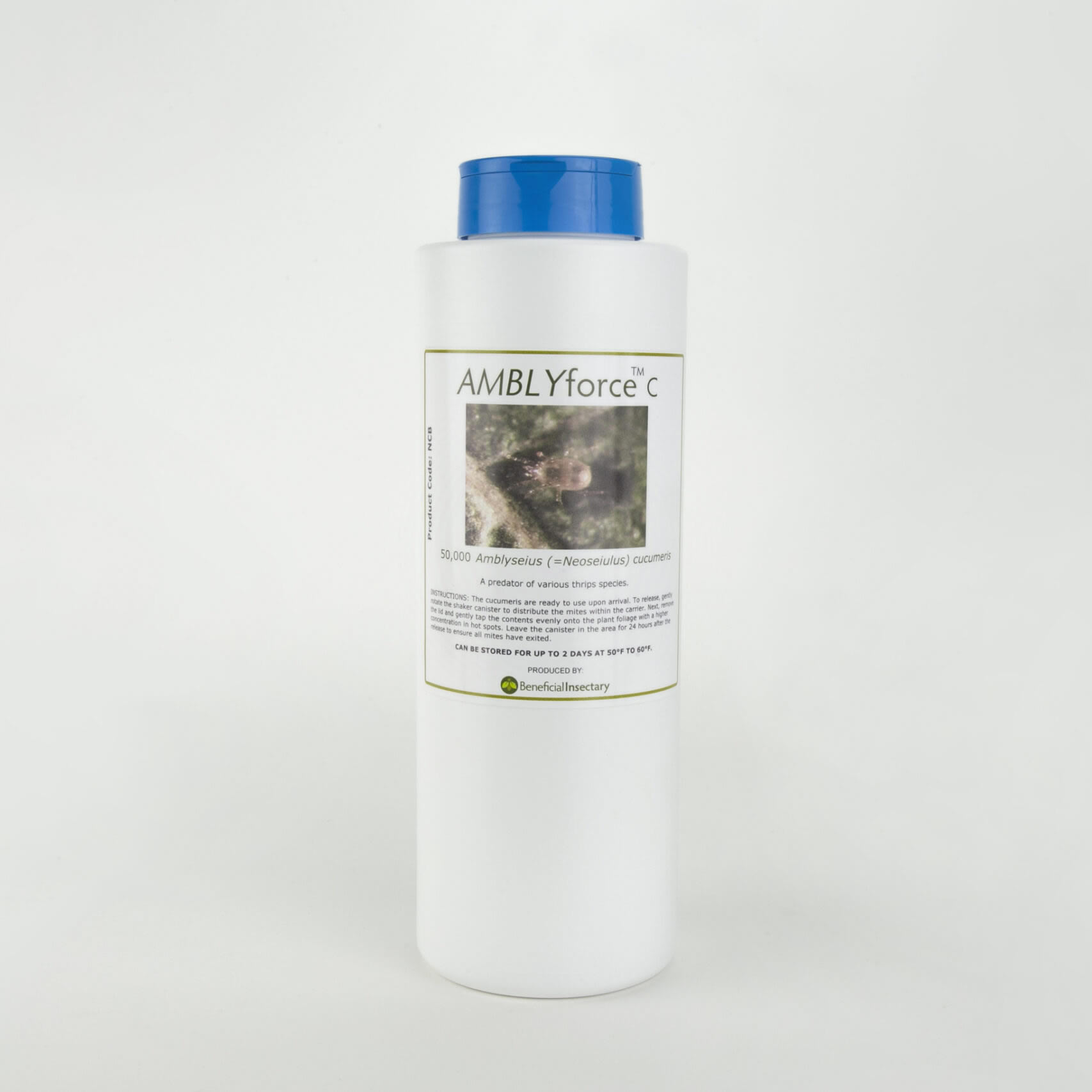WHITEFLY CONTROL
Whiteflies
Beneficial Insectary mass-rears biological pest control agents that explicitly address the natural management of Whitefly pests.
Whiteflies are members of the Homopteran order, making them closely related to aphids.
Many different whitefly species cause severe damage to many vegetables, herbs, greenhouse, and field crops.
Out of the many whitefly species, two plague greenhouses the most: Silverleaf (Bemesia tabaci) and greenhouse (Trialeurodes vaporariorum) whitefly.
Silverleaf whiteflies have two biotypes (Biotype Q), less susceptible to convention applications.
Whiteflies are typically associated with warmer weather but can easily overwinter on a crop in a heated greenhouse.
Many whitefly species are not host-specific and can feed on numerous plant genera.
Whiteflies produce a waxy substance around them, making their colonies easy to spot on the undersides of the leaves even when adults are not present.
Whitefly undergoes an incomplete metamorphosis, consisting of an egg, nymph, and adult life stages.
Adult female whiteflies can lay up to 200-500 eggs, depending on the species. Eggs can be in clusters or singularly around the bottoms of leaves.
Whitefly development is temperature-dependent, but eggs can take anywhere from 3 to 7 days to develop.
The nymph life stage has three distinct phases. The first is a mobile nymph (or “crawler”), the second is a sedentary nymph (or “scale”), and the final stage still being sessile but has more development present (or “pupae”).
The mobile 1st instar nymphs begin moving and feeding immediately. Still, by their 2nd nymphal instar, whiteflies settle down into their sedentary life stage or scale.
The 2nd instar nymphs will continue to feed and develop in a sessile state but only increase in size between their 2nd and 3rd scale stages.
By a whitefly’s 4th instar, they have gone under so much development that they begin looking like adult whitefly trapped inside a cocoon.
Adult whiteflies cut T-like slits out of the back of their 4th instar’s exoskeleton and emerge sexually mature.
Whiteflies can develop rapidly in warmer conditions and require a preventative application (biological or conventional) before populations are monitored.
Whitefly parasite development can take up to three weeks. Consistent, weekly releases throughout a crop’s life cycle are critical to pressure on pest populations by maintaining high parasite presence.
Whiteflies create waste like aphids called honeydew, which they make from feeding off of plant sap. This honeydew can act as a host media for a fungus called black sooty mold, leading to several pathogenic problems.
Certain whitefly species are susceptible to chemical applications, like the varying chemical efficacies of different thrips species.
Whiteflies can harbor and distribute other more minor pests, like broad mites, since they can fly and move so quickly throughout the crop.
Beneficial Insectary mass-rears biological pest control agents that explicitly address the natural management of Whitefly pests.
Regular releases of parasitic wasps can keep a solid biological force present in crops with classic or habitual whitefly pressure.
Other predators can target different life stages of the pest. Still, parasitic wasps are a baseline necessity for biologically-based whitefly programs.
Monitoring with sticky cards can be a great way to passively scout for whitefly. Still, you must keep in mind that whitefly parasites will also be attracted to sticky cards.
For active scouting, plants can be shaken lightly since whiteflies do not like agitation. You can then inspect plants that whitefly adults have flown away from to look for colonies or infestations.
Proper identification of the species is critical for whitefly since certain parasites will be more appropriate for specific species of whitefly.
Get in contact with an IPM Specialist at Beneficial Insectary to get more insight on appropriate releases and recommendations based on the species of whitefly you are currently battling.
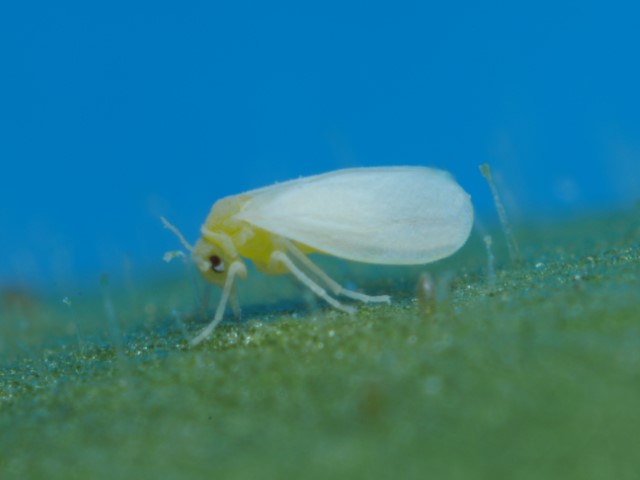
NATURAL SOLUTIONS
Products We Offer

ENCARSIAforce™
This is one of the original biocontrol agents, with a long and successful history of their ability to prevent and manage greenhouse whiteflies.
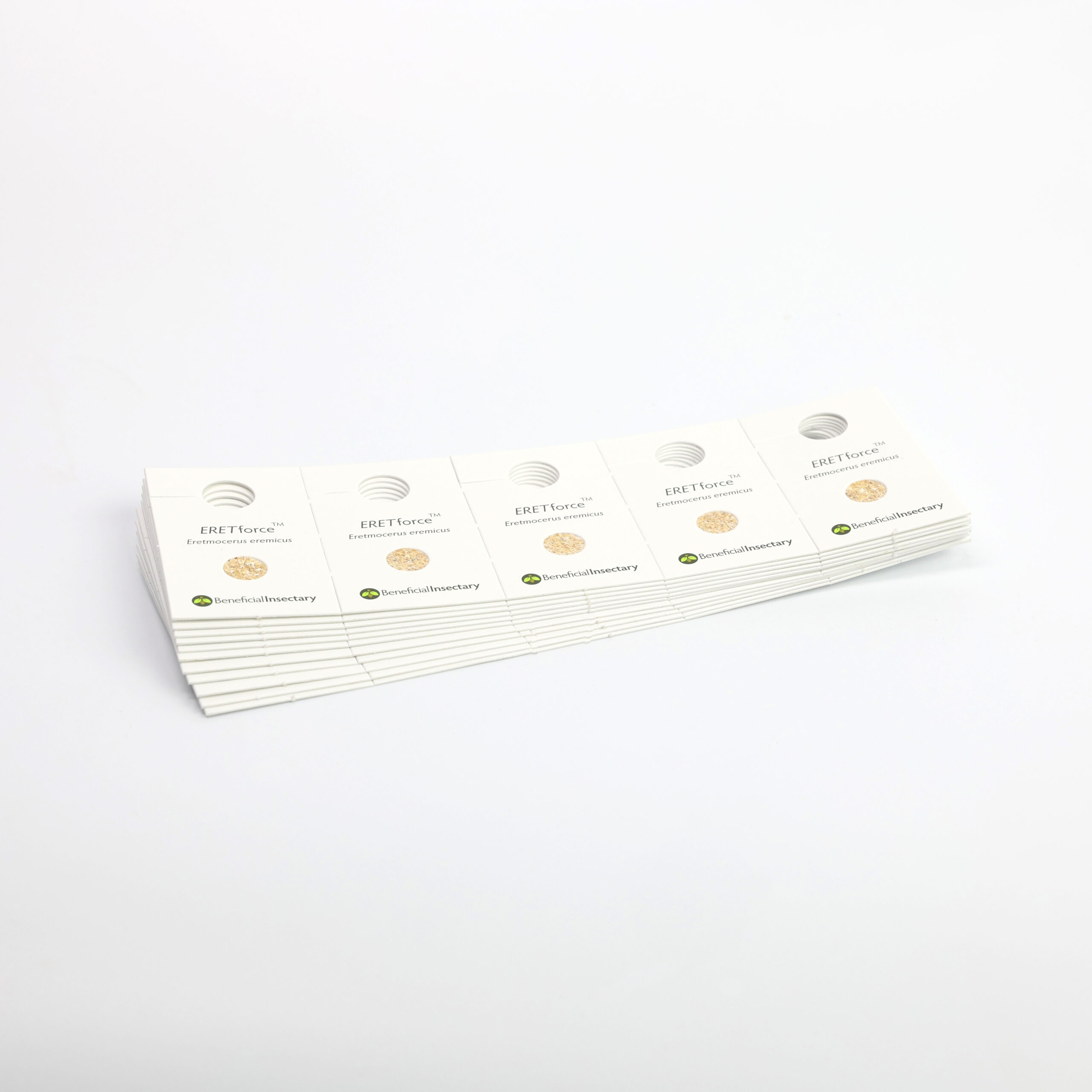
ERETforce™
These hanger cards are an excellent package for distributing these Sweet Potato and Silverleaf whitefly parasitoids.
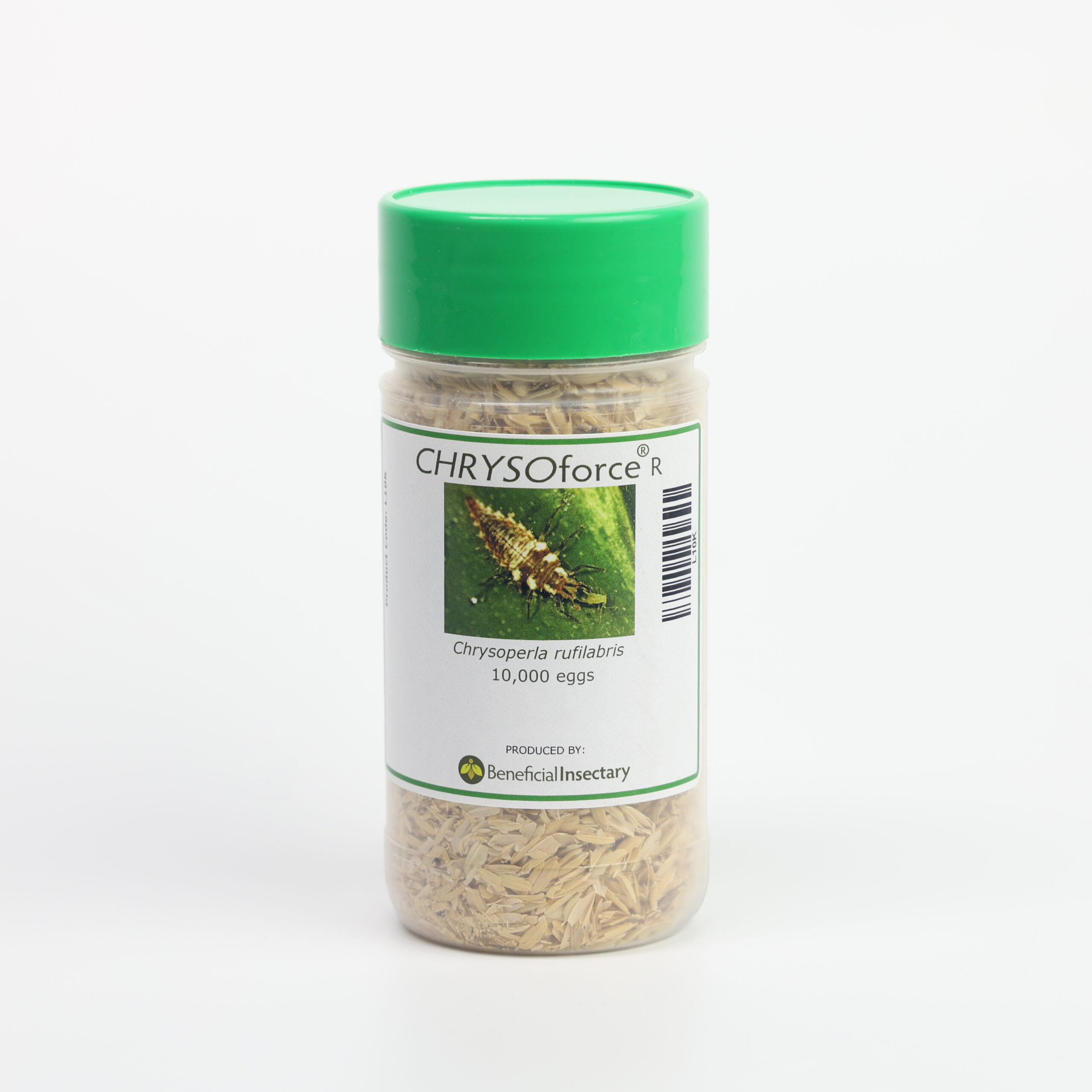
CHRYSOforce™ R
Green lacewings are aggressive predators of aphids and other soft-bodied pests. Larvae are ideal for faster control.

